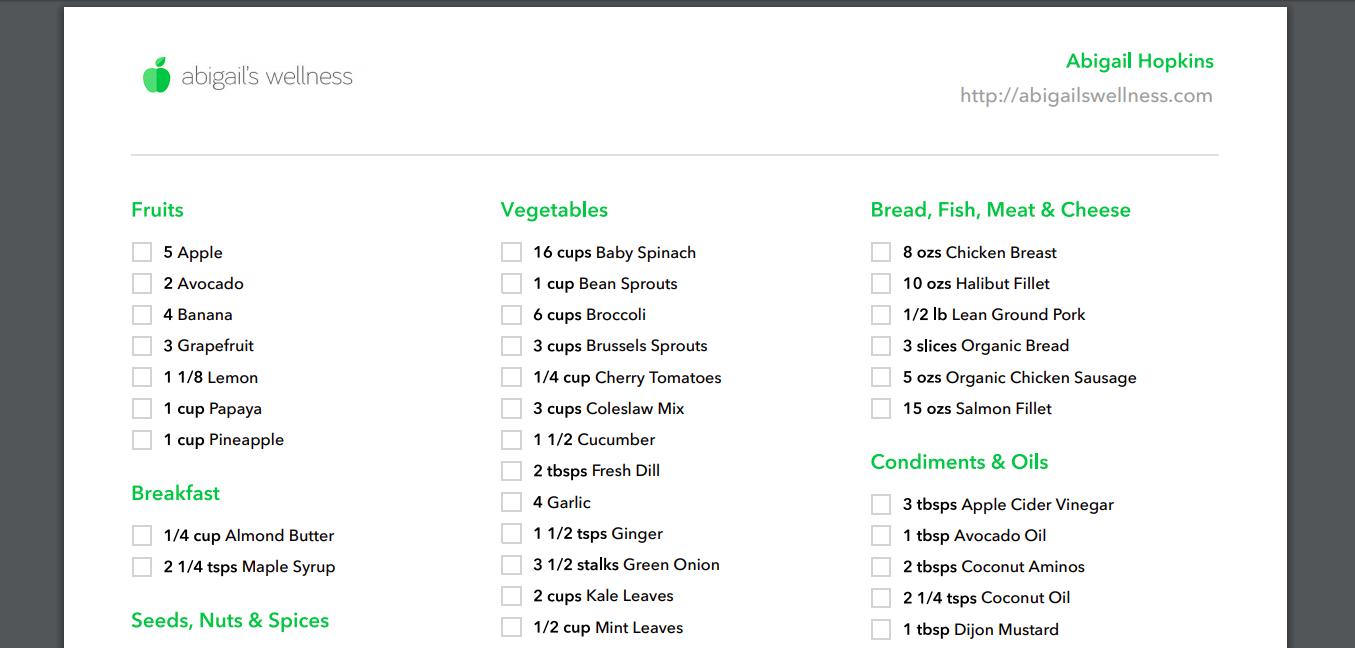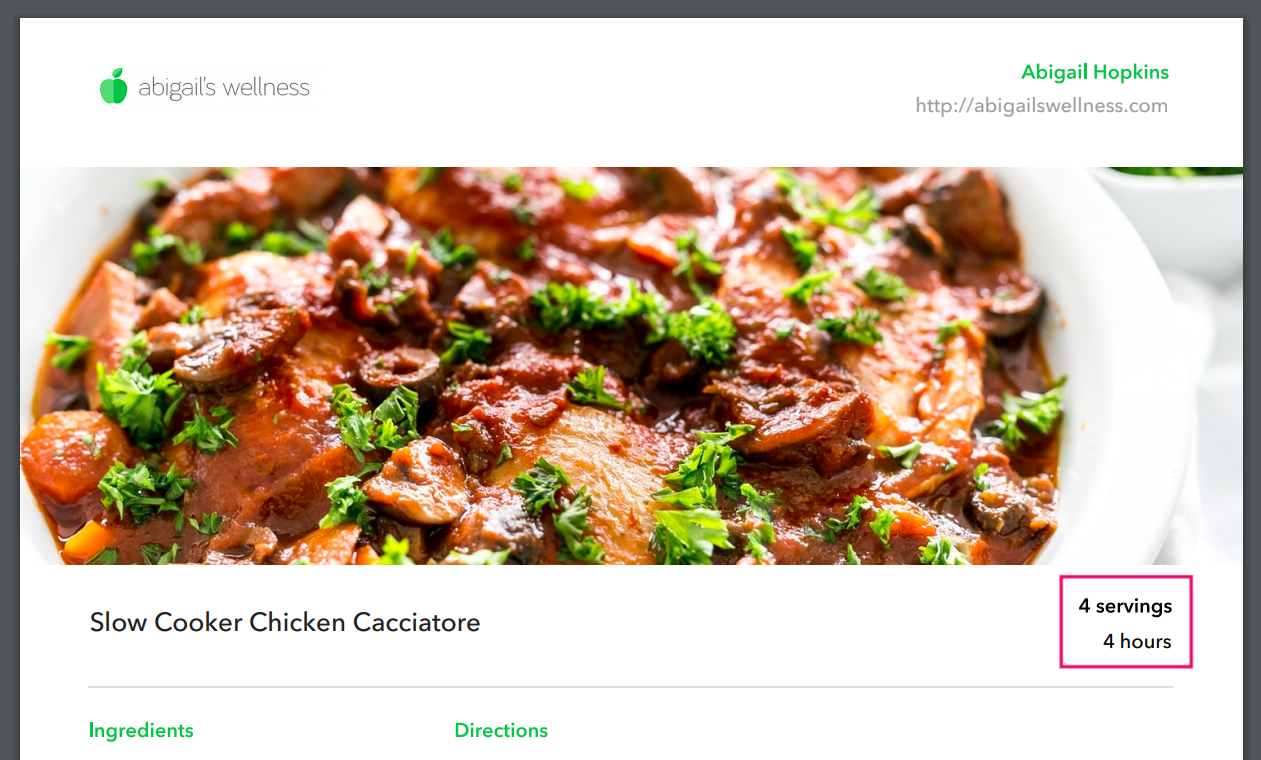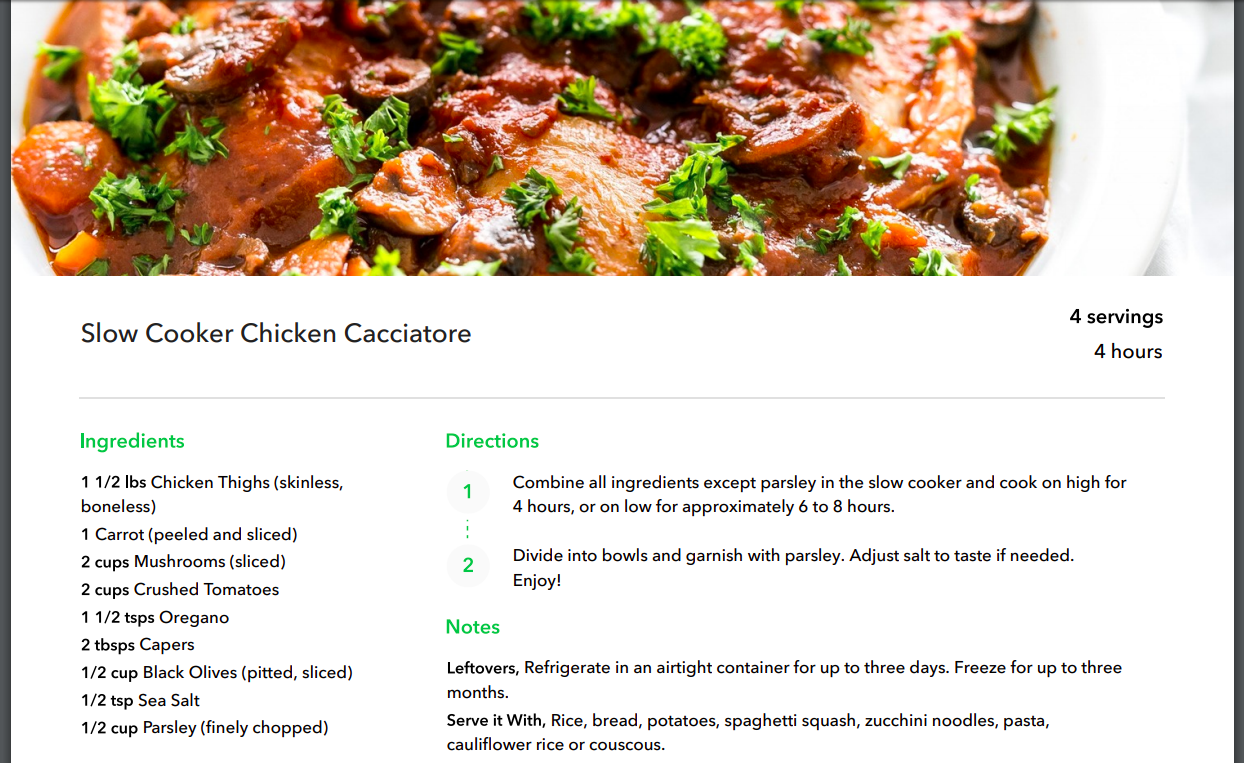Being a great nutrition professional means always being one step ahead of your clients. You must anticipate the challenges they will face and give them the tools to overcome them in advance.
When it comes to providing a meal plan to a new client, it’s so important to walk them through the plan so they understand how to use it.
It can be difficult to know how to explain a meal plan to a client, so today we're showing you the things you should cover, and exactly what to say to ensure your client gets the most out of the awesome plan you have created for them.
When presenting a meal plan to a client for the first time, here's what you should plan to cover:
- How to use the shopping list
- How to read the recipes and serving sizes
- Leftovers
- Modifications and substitutions
- Meal timing
Using the Shopping List
When you use That Clean Life to create your client meal plans, the shopping lists are automatically generated based on the recipes you've added to the meal plan. It’s likely that your client will already have some of these ingredients at home, so let them know to go through the list and cross off items they already have before heading to the store. This will save them a ton of money, as they won't be buying ingredients they have already purchased. When their grocery bill is lower, following the plan is more affordable, which your clients will appreciate.
Not only are shopping lists automatically generated when you use That Clean Life, but they are also organized into categories, based on how the typical grocery store is laid out. For example, the first category on the list is fruits, followed by vegetables. This is because fruits and vegetables are usually the first sections you hit when you walk into a grocery store. Having the list organized this way will allow your client to shop in an organized fashion, instead of having to backtrack through the store. Make sure you tell them to work through the list in order because it will save them a ton of time!

Your clients may also want to know where to do their shopping, so include store suggestions along with any specific brands to look out for.
Bringing everything together, here's an example of how you can tell your client about the grocery list portion of the meal plan:
"I've included a full grocery list that outlines the ingredients you will need to follow this meal plan. Before you head out to do your shopping, take some time to go through the list and check off any items you already have. This will save you time and money when shopping!
I've also organized your grocery list into categories, based on how a typical grocery store is laid out. This will allow you to do your grocery shopping in an organized order starting with fruits and vegetables. It will also help you to avoid any back-tracking through the store. This grocery shopping trick will help you get in and out of the store fast! All ingredients on the list are items you should be able to pick up at your local grocery store, so no special trips to the health food or specialty store required."
Reading Recipes & Serving Sizes
If your client is new to cooking their own food, you should educate them on how to read the recipes. Recipes exported from That Clean Life always have the number of servings and total prep time clearly listed so your client will know how many servings the recipe creates, and how long it will take them to make.

Remind your client to check the ingredients list for prep notes such as peeling and chopping so they can prep ingredients before they start cooking.

Knowing how much to eat can be confusing, so let your clients know that unless otherwise indicated, they should eat one serving per meal. For example, if a recipe serves four, they would divide the recipe into four equal servings and eat one.
If you want your clients to eat multiple servings of a meal, you will need to adjust the portion size from your That Clean Life planner. To learn more about adjusting portion sizes, click here.
Here's an example of what you might say to educate your client on how to read recipes and serving sizes:
"Every recipe within this meal plan states the total number of servings and the total prep time so that you know how many servings the recipe creates, and how long it will take you to make it. Before you start cooking, assemble all ingredients and prep them according to the ingredients list.
Unless otherwise indicated, you will be eating one serving of each meal. So if a recipe serves four, prepare it, divide it into four even portions and enjoy one portion."
Leftovers
Meal plans created on That Clean Life will indicate what meals on the plan are leftovers by shading them out. This is a visual reminder that your client doesn’t need to cook that meal again since they have already made it.

You can let your client know what the shaded out meals on the plan mean by saying something like:
"You'll notice that some meals on the plan are shaded out. This means that the meal has been marked as a leftover. You've already prepared it, so you do not need to prepare it again. Leftovers are a great way to save you time in the kitchen!"
Modifications and Substitutions
Many That Clean Life recipes have a section called Notes, which include modifications and substitution ideas. As a member of That Clean Life for Business, you can add your own notes to recipes too. Learn more about how to do that here.
It is up to you whether you include the Notes section on your recipes, but if you do, be sure to let your clients know what this section is all about.
"Many recipes on the plan have a section called "Notes" where I provide tips on how to store leftovers and provide substitution options if you are missing an ingredient."
Meal Timing
Your clients might wonder what time they should eat their meals. Philosophies on meal timing vary from practitioner to practitioner, but if this is important to you as a nutrition professional, be sure to include some guidance on it. For example:
"Try to have your meals between 8AM and 8PM so that your digestive system gets a chance to rest at night. During the day, eat at whatever times work with your schedule."
So let's pull everything together. Here's what a full meal plan explanation note to your client might look like:
Hi {Client Name},
Welcome to your meal plan! On the next few pages, you will find the customized plan I have created for you, along with an itemized grocery list and delicious recipes.
I've included a full grocery list that outlines the ingredients you will need to follow this meal plan. Before you head out to do your shopping, take some time to go through the list and check off any items you already have. This will save you time and money!
I've also organized your grocery list into categories, based on how a typical grocery store is laid out. This will allow you to do your grocery shopping in an organized order starting with fruits and vegetables. It will also help you to avoid any back-tracking through the store. This grocery shopping trick will help you get in and out of the store fast! All ingredients on the list are items you should be able to pick up at your local grocery store, so no special trips to the health food or specialty store required.
Every recipe within this meal plan states the total number of servings and the total prep time so that you know how many servings the recipe creates, and how long it will take you to make it. Before you start cooking, assemble all ingredients and prep them according to the ingredients list.
Unless otherwise indicated, you will be eating one serving of each meal. So if a recipe serves four, prepare it, divide it into four even portions and enjoy one portion.
You'll notice that some meals on the plan are shaded out. This means that the meal has been marked as a leftover. You've already prepared it, so you do not need to prepare it again. Leftovers are a great way to save you time in the kitchen!
Many recipes on the plan have a section called "Notes" where I provide tips on how to store leftovers and give substitution options if you are missing an ingredient or want to swap something out.
Try to have your meals between 8AM and 8PM so that your digestive system gets a chance to rest at night. During the day, eat at whatever times work with your schedule.
If you have any questions at all, please don’t hesitate to reach out. You can reach me by email and I always do my best to respond within 24 hours.
I hope you will love following this meal plan as much as I have enjoyed making it for you!
-Your Name

